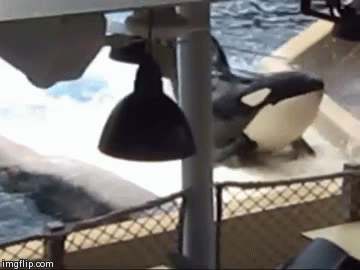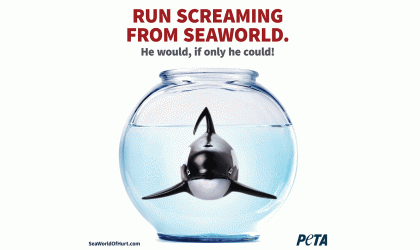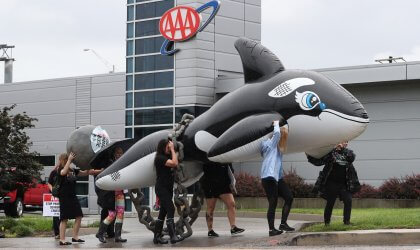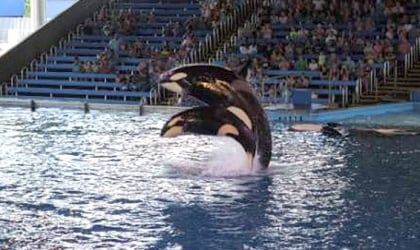This is Lolita. At only 4 years old, she was torn away from her family and ocean home during the largest capture of wild orcas in history.
In 1970, more than 90 orcas were stalked and forcefully corralled into nets, and seven were abducted that day and sold to marine parks.
For a mere $6,000, Lolita (whose given name is Sk’aliCh’elh-tenaut) was purchased by the Miami Seaquarium, where she has been confined for decades and used for human entertainment.
She is the sole survivor of that horrifying capture and has spent almost all her life in the smallest, oldest orca tank in the world—one that doesn’t even meet the federal Animal Welfare Act’s antiquated and inadequate minimum size requirement and that fails to provide her with any shelter from the blistering Miami sun. Orcas in nature spend 90 percent of their time underwater and dive to depths of thousands of feet, but the tank confining Lolita is just 20 feet at its deepest point—the same length as her body. Orcas held in tanks often sustain sunburns and even blisters.
With very little stimulation and no opportunity to engage meaningfully in the most basic and natural orca behavior, Lolita spends her days floating listlessly. She has been without the companionship of any member of her own species since 1980—when her tankmate, Hugo, died after repeatedly ramming his head into the tank wall.
Common zoochotic behavior observed in captive animals includes repetitive, harmful actions. For example, this orca bangs his head on a landing platform at SeaWorld:
Lolita’s family, the Southern Resident orca population, is now endangered—in large part because their babies have been captured and held in captivity and adults have been killed while trying to save them.
When the National Marine Fisheries Service (NMFS) listed the Southern Residents as endangered, affording its members protection under the Endangered Species Act (ESA), it specifically denied protection to Lolita, without any explanation or justification. Following a PETA lawsuit and petition as well as comments submitted by more than 17,000 people, the NMFS finally granted her the protections that she’s entitled to under the ESA. Despite this, she’s still being held captive.

It’s time for Lolita to go home.
Many organizations, including PETA, the Whale Sanctuary Project, and the Orca Network, as well as the Lummi Native American tribe have offered plans for building sea sanctuaries for orcas, where they could have some semblance of the life that was stolen from them. For Lolita, being transferred to one could also mean the chance to see and perhaps even interact with her family pod again.





